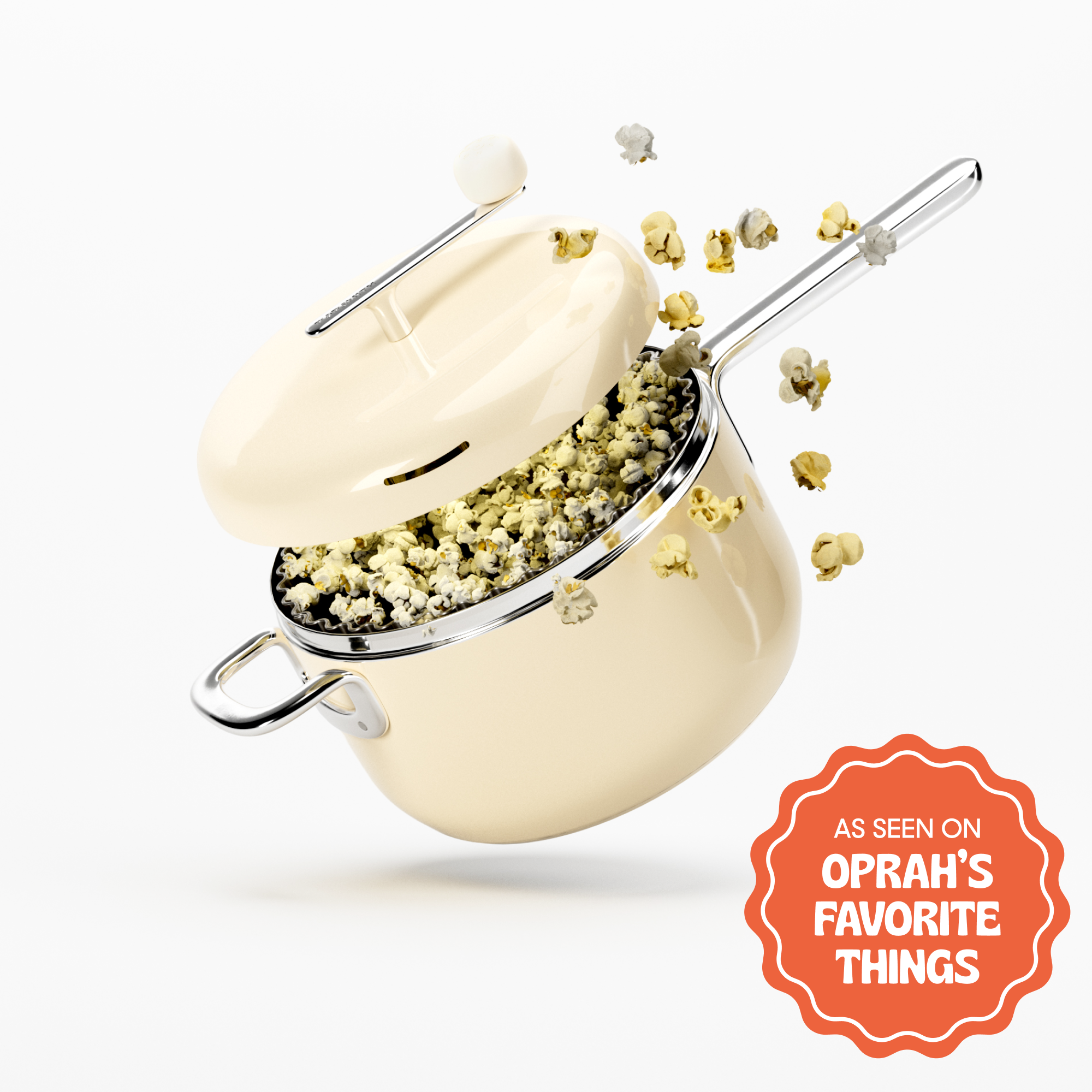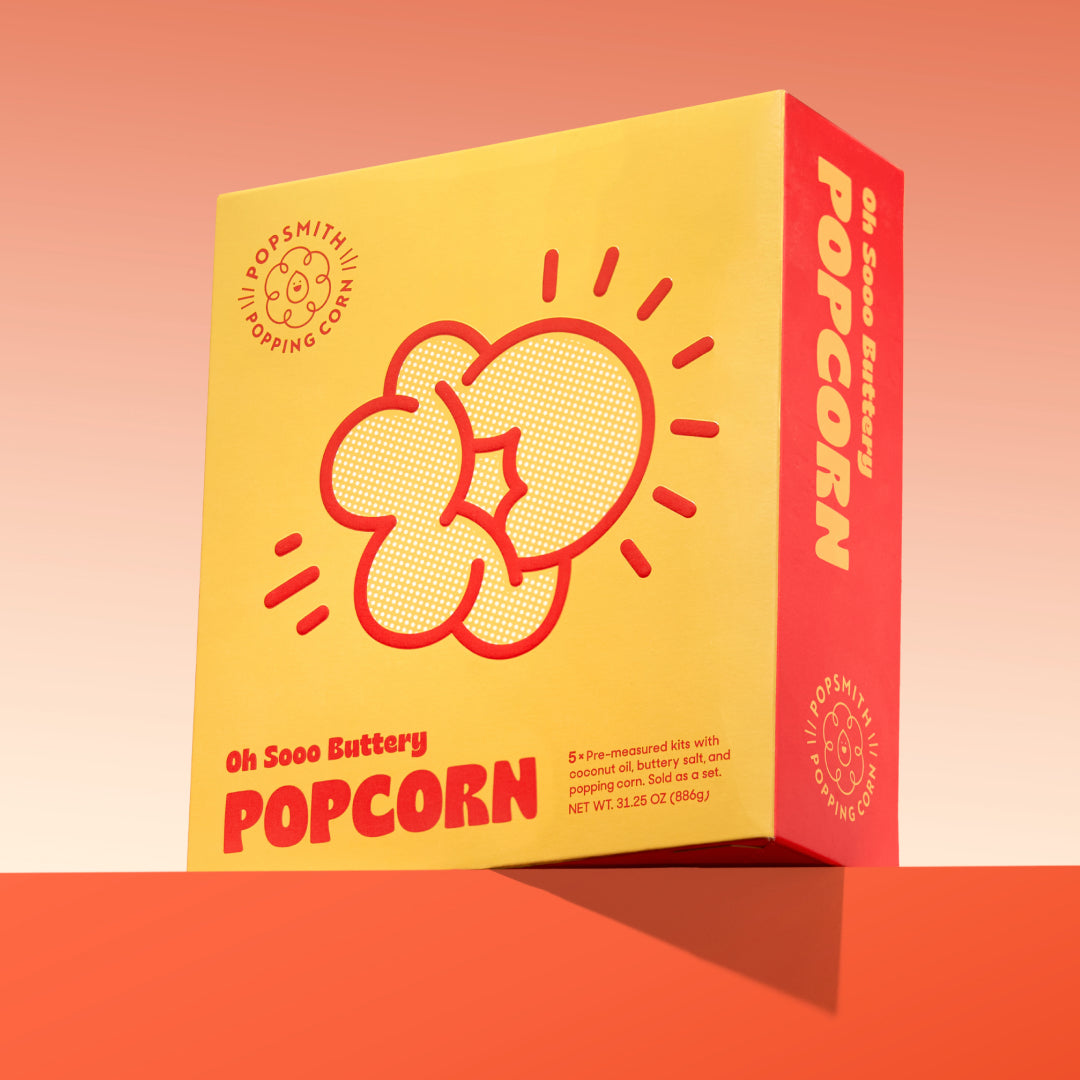You love popcorn. It’s your favorite snack.
But there’s something you’re itching to know — is popcorn bad for you?
We see why you might get confused. Some lump it in the same category as potato chips and candy, while others tout it as a nutrient-dense whole grain.
The truth is, it’s not all black and white.
Let’s break it down:
Understanding Junk Food vs. Whole Foods
Before we reveal whether popcorn is bad for you or not, let’s discuss what junk food really means.
Nutritionists define it as any food that:
-
Contains high calories with minimal nutritional value
-
Is loaded with added sugars, unhealthy fats, or excessive sodium
-
Lacks essential nutrients like fiber, vitamins, and minerals
-
Provides little satiation, leading to overconsumption
-
Is heavily processed with artificial ingredients
Food like candy bars, sugary sodas, fried chips, and packaged cookies all meet these criteria. You’ll notice that these deliver a quick energy spike followed by a crash, leaving you hungry and craving more.
So, Where Does Popcorn Fit In?

Popcorn is a whole grain, not a processed food. That’s what makes it stand out from other popular snacks.
Each kernel contains all three parts of the grain — the bran, germ, and endosperm — making it nutritionally complete.
Plain, air-popped popcorn is naturally low in calories, gluten-free, high in fiber, and free from artificial additives.
Here’s how it stacks up against popular snacks:
|
Snack (1oz serving) |
Calories |
Fiber |
Sodium |
Added Sugar |
|
Air-popped popcorn |
110 |
4g |
1mg |
0g |
|
Oh Sooo Buttery Popcorn |
140 |
4g |
360mg |
0g |
|
Potato chips |
152 |
1g |
140mg |
0g |
|
Pretzels |
109 |
1g |
352mg |
0g |
|
Crackers |
142 |
1g |
203mg |
2g |
Even our Oh Sooo Buttery Popcorn holds its own — it’s got all the fiber of plain popcorn and is made with vegan, gluten-free, and all-natural ingredients. Sure, it has more sodium than unseasoned popcorn, but it’s less processed than other snacks and leaves you satisfied after eating.
Now let’s dive deeper into popcorn’s nutritional profile:
Macronutrients (per 1oz/28g serving)
-
Calories: 110
-
Carbohydrates: 22.1g
-
Fiber: 4g
-
Protein: 3.7g
-
Fat: 1.3g
Key Vitamins and Minerals
-
Magnesium: 11% of daily value (important for heart health and bone strength)
-
Phosphorus: 7% of daily value (essential for bone and teeth health)
-
Zinc: 7% of daily value (supports immune function)
-
Manganese: 9% of daily value (helps with metabolism and bone development)
-
Iron: 5% of daily value (prevents anemia and supports energy)
Antioxidant Power
Research from the University of Scranton found that popcorn contains surprisingly high levels of polyphenols — antioxidants that help fight inflammation and may reduce the risk of heart disease and certain cancers.
And guess what? Popcorn actually contains more antioxidants per serving than many fruits and vegetables.
When Popcorn Goes Wrong
Now for some bad news: while plain popcorn is undoubtedly healthy, plenty of the commercially available kind fall more into junk food territory:
Microwave Popcorn

The convenience of microwave popcorn comes at a cost. Even though you don’t have to worry about diacetyl being present anymore, most varieties still have long ingredient lists of artificial colors, flavors, and preservatives that have no place in real food.
Pre-Packaged Bagged Popcorn
It might be hard to resist those colorful bags in the snack aisle, but if you flip most over and read what’s in them, you’ll find them full of artificial preservatives and flavor enhancers like MSG.
Caramel Corn

Caramel corn is more candy than it is a whole grain snack. You consume more sweetener than corn since caramel is basically sugar and corn syrup. And if you buy the bagged kind, you’re also getting artificial preservatives and colors to maintain its glossy appearance.
Movie Theater Popcorn

Cinemas take popcorn to the extreme with massive portions, artificial butter flavoring, and enough sodium to max out half your daily limit. While it’s meant for sharing, a lot of folks can easily polish a large tub of movie theater popcorn (1,200+ calories) on their own.
How to Enjoy Healthier Popcorn
With the right preparation method and ingredients, you can make popcorn a genuinely healthy (and delicious) snack.
Make It from Scratch

The safest way to guarantee your popcorn is healthy? Make it yourself. When you control the ingredients,
Now you know that air popping is the healthiest method since it uses hot air, not oil, to pop the kernels. However, many people feel that air-popped popcorn lacks flavor and has a slightly chewy texture.
For the perfect balance of health and flavor, stovetop popping is your best bet. A stovetop popcorn machine like the Popsmith Popper makes the process foolproof, giving you consistently tasty results.
Here are other reasons why homemade popcorn always beats store-bought:
-
You choose what oil to use and how much
-
You customize the salt and seasoning levels
-
It’s much more economical per serving
Use the Right Oil

Another factor that affects your popcorn’s nutritional value is the type of oil you choose. Look for one that has fewer calories but still has a decent smoke point.
Here are three suggestions:
-
Coconut oil: High smoke point, adds a richness to popcorn, contains beneficial MCTs
-
Avocado oil: Highest smoke point, neutral flavor, good source of heart-healthy monounsaturated fats
-
Olive oil: Has a lower smoke point but is still good for popcorn; also provides antioxidants and healthy fats
Meanwhile, you want to avoid:
-
Vegetable shortening: Typically contains trans fats
-
Processed vegetable oils: High in omega-6 fatty acids and often inflammatory
-
Butter for high-heat popping: Burns easily and can create harmful compounds
PRO TIP: Use minimal oil for popping (1-2 tablespoons for every ½ cup kernels), then add flavor with spices or a light drizzle of oil after popping.
Practice Portion Control
A serving of popcorn is about 3-4 cups. That equals about 31 calories per cup for air-popped, or 35 calories per cup for a serving of Oh Sooo Buttery Popcorn. That’s reasonable for a satisfying snack, don’t you think?
Go Easy on the Salt

While popcorn is naturally very low in sodium (1mg per cup), it's easy to go overboard with salt. The American Heart Association recommends no more than 2,300mg of sodium per day.
That doesn’t mean you’re stuck with bland, flavorless popcorn. You just need to use low-sodium seasoning alternatives like:
-
Nutritional yeast: This makes cheesy vegan popcorn and gives you a dose of B vitamins.
-
Herbs and spices: You can never go wrong with garlic powder, paprika, oregano, and cumin.
-
Citrus zest: Lemon or lime zest adds brightness.
-
Parmesan cheese: A small amount of this stuff makes a big impact.
-
Everything bagel seasoning: Use store-bought or, better yet, make your own blend.
RELATED: 9 Low Sodium Popcorn Ideas Your Taste Buds Will Enjoy
Is Popcorn Bad for You? Here’s the Final Verdict
Whether popcorn is bad for you or not depends entirely on how it’s made and what seasonings you add.
Popcorn itself is naturally low in calories and packed with fiber as a whole grain, so the corn isn’t the villain. It’s the microwave bags stuffed with artificial ingredients and preservatives, or the candy mix-ins like peanut butter cups or gummy bears, that turn it into junk food.
But with the right seasonings and reasonable portions, it makes a healthy and versatile snack. Post-workout energy boost? Check. After-school snack that won’t spoil your kids’ appetite for dinner? Check. Road trip snack that won’t leave you sluggish? Check.
Start making better popcorn now — the Popper gives you full control over your snacking!





